| The campsite is at the
side of a lake. We do get to stay in some pleasant places.. |  |
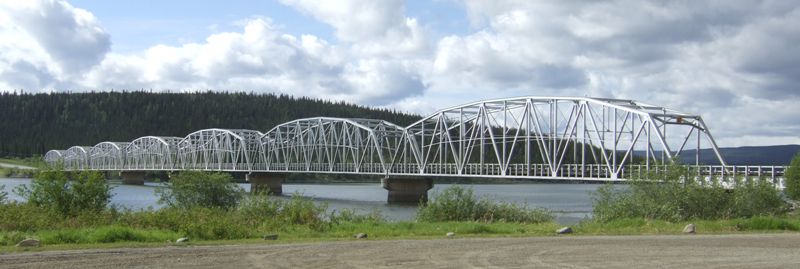 | |
The bridge at Teslin from another vantage point - it is quite spectacular. |
| An odd bit of humour. The
animals are plastic. We have yet to see either type for real. | 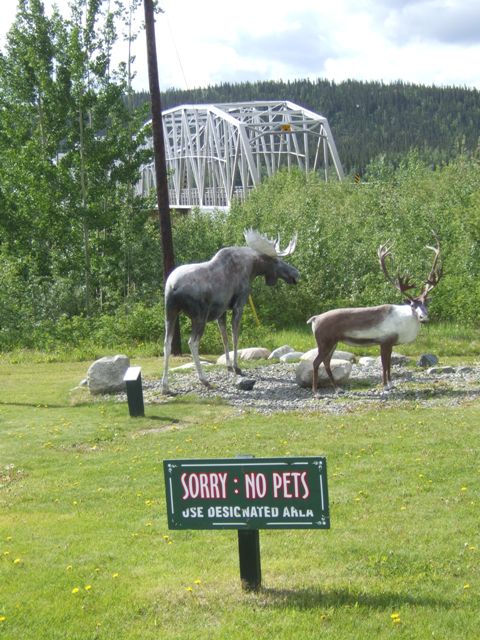 |
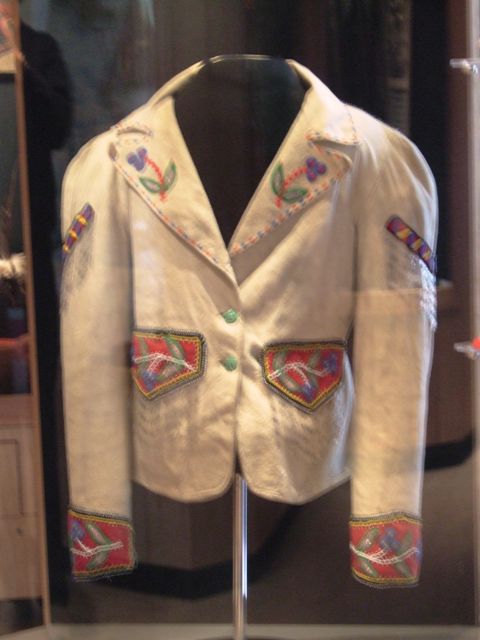 |
Teslin is a First Nation community for the Tlingit people. Just outside the
village they have a heritage centre. This is a beaded jacket on display,
made by a grandmother with love for her granddaughter in the 1930s. |
| There are about a dozen
display cases of historical items including these snowshoes. | 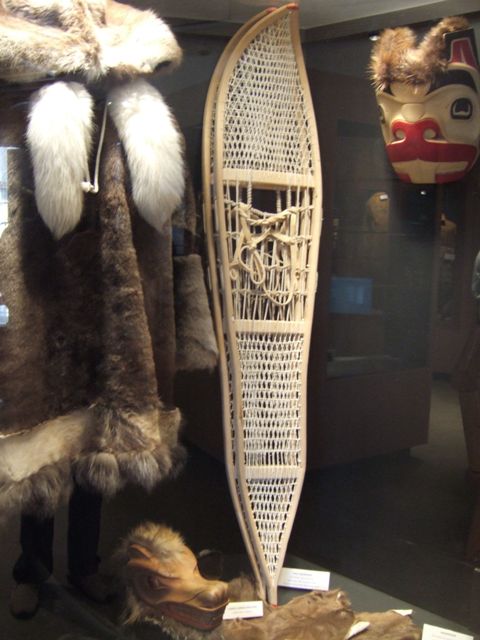 |
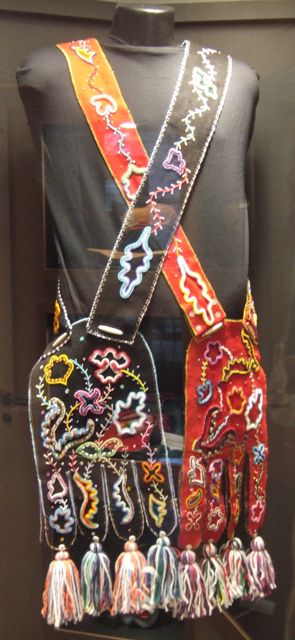 |
Most of the items are artistic in nature as the whole centre focusses on
Tlingit art. This is more beadwork and they are known as octopus bags, but
it doesn't explain why. |
| There are a lot of masks
which seem to feature highly in many native cultures. This is a frog mask. | 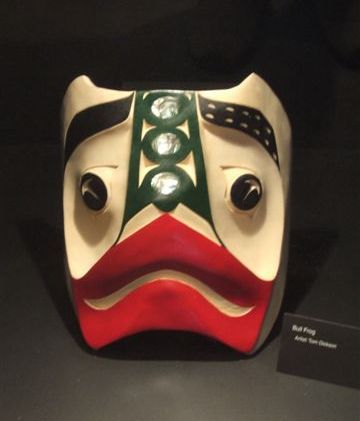 |
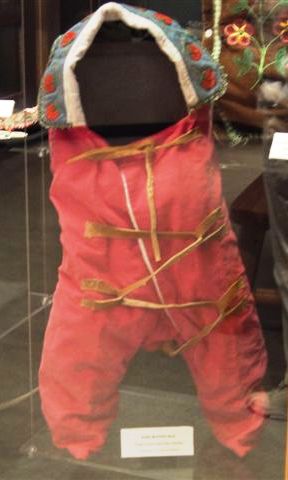 |
These carryalls for babies are known as 'buntings' - perhaps that is the
origin of the phrase 'baby bunting'. This one seems to be unusual in that it
has separate legs. |
| The Tlingit were experts
at tanning hides and these skin jackets are an example of their skills. | 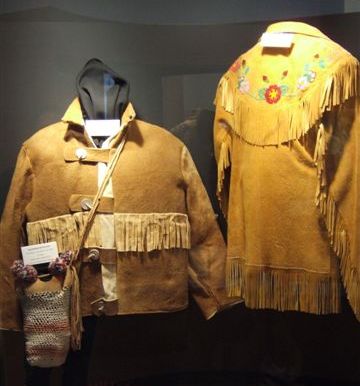 |
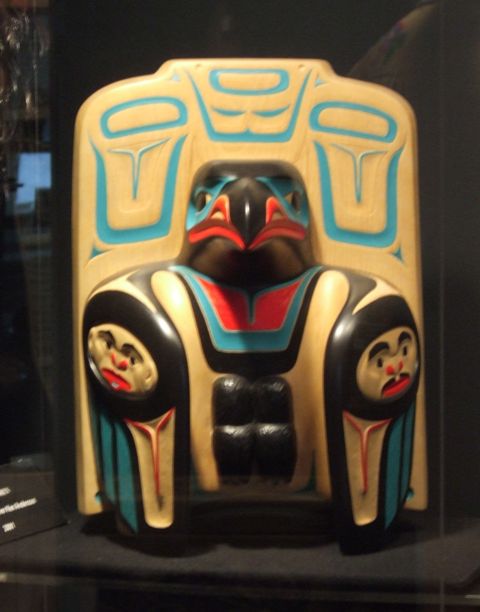 |
Another mask of an eagle watcher. You would need to know much more about the
Tlingit to understand the symbology. This is very reminiscent of the Hopi
and Navajo in the Arizona mesas. |
| This is a cribbage board
with a matching dogsled team. It is very artistic. I didn't know that
cribbage was so widely played. | 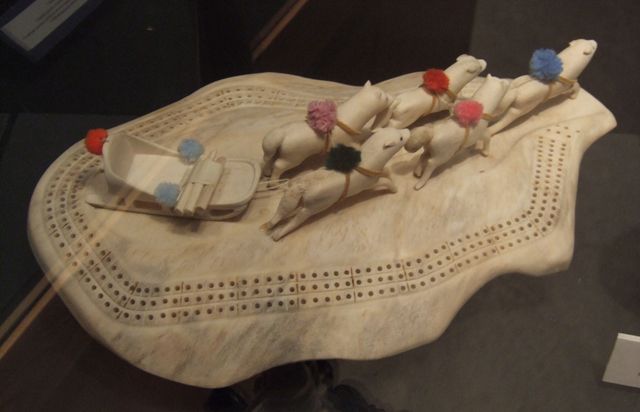 |
 |
Outside are a number of totem poles representing the wolf, eagle, frog,
beaver and raven. The centre is very modern and this would seem to be quite
a wealthy nation. |
| Although we are quite a
long way from the sea and, more importantly, the large cedars required to
make them, large canoes were much prized. This is a traditional style of
dugout, hand made from a single log. The other two in the shed are more
modern and made from fibreglass. | 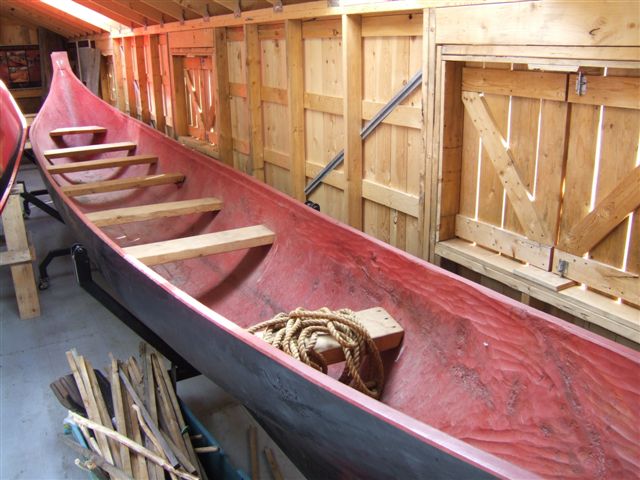 |
 |
We had originally planned to stop here to sample the famous salmon bake. But
a sign warned us it was closed, so we had stopped about 12 miles early at
Teslin. |
| Back to the Teslin river
as we travel the last leg up to Whitehorse. |  |
 |
Besides the Alaska highway, another road was built during the war years to
carry an oil pipeline and it crosses the Alaska highway at Johnson's
Crossing. This is the Canol road up to Ross River and the oilfields at
Norman Wells. These are the remains of old wartime vehicles. It did not last
after the war because the oil proved to be too expensive at $135 a barrel. |
| We have commented on the
wide verges. Here we spotted someone mowing the verges. We have seen a
variety of vehicles doing this - but it does remind us of home. | 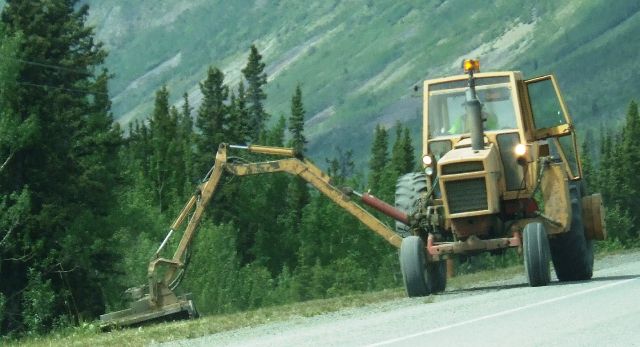 |
 |
Most of the bridges are plain metal but this one is painted blue. |
| This is the Lewes Dam,
part of the Marsh Lake control system for the waters on the Yukon River. In
the spring, water is released to break up the ice on the lakes downstream
and increase the water depth to aid the boats travelling from Whitehorse. |  |
 |
A view of the Yukon river just as it leaves Marsh Lake on its way to
Whitehorse and eventually the Bering Sea. |
|